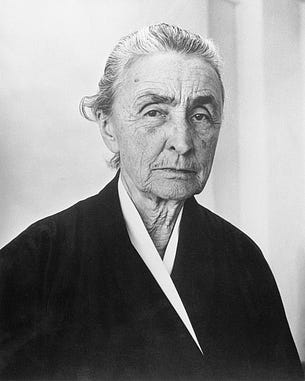|
 |
The Writer's Almanac from Wednesday, November 15, 2017
“Bell Bottoms and Platform Shoes” by Maria Mazziotti Gillan from What Blooms in Winter. © NYQ Books, 2016.
ORIGINAL TEXT AND AUDIO - 2017
On this date in 1969, the Vietnam Moratorium Committee staged one of the biggest anti-war protests in American history. It followed a month after a massive demonstration and teach-in dubbed the Moratorium to End the War in Vietnam. As many as half a million people gathered for this day’s event, the Moratorium March on Washington. Protesters marched down Pennsylvania Avenue to the Washington Monument, where they listened to speeches by anti-war politicians and sang John Lennon’s new anthem “Give Peace a Chance,” led by Pete Seeger. Arlo Guthrie; Peter, Paul, and Mary; and the cast of the musical Hair also performed. The Moratorium March followed immediately after the three-day March Against Death, in which 40,000 silent protestors walked in single file down Pennsylvania Avenue, each carrying a sign bearing the name of a dead soldier.
“The predominant event of the day was that of a great and peaceful army of dissent moving through the city,” the New York Times reported. The Times also described the crowd as “predominantly youthful” and a “mass gathering of the moderate and radical Left … old-style liberals; Communists and pacifists and a sprinkling of the violent New Left.”
Other protests were held around the world in support of the Washington moratorium. A quarter of a million people gathered in San Francisco. Future U.S. president Bill Clinton organized an anti-war event in Oxford, England, where he was a Rhodes scholar.
President Nixon had promised during his 1968 presidential campaign to withdraw from Vietnam, but —10 months into his term — had so far failed to deliver. He was not swayed by the protests, and said, “As far as this kind of activity is concerned, we expect it; however under no circumstances will I be affected whatever by it.” He watched sports on TV in the White House while the demonstration was taking place.
It’s the birthday of American cartoonist Jessica Abel, born in Chicago, Illinois (1969). She’s the creator of comics like Life Sucks and La Perdida (2008), which details an American’s life in Mexico City. In the story, one character says, “In gringolandia you have irony for everything, so you can look at it and know what to think.” With This American Life host Ira Glass, she co-wrote Radio: An Illustrated Guide (1999), a comic book that explains how to make a public radio program. She once called her comics a mash-up of “Jane Austen plus Günter Grass plus Cormac McCarthy.”
Abel started out self-publishing her comic books by making photocopies and sometime hand-sewing her work, like Artbabe (1992). Trish Trash is a comic about a roller derby girl on a future colony of Mars.
Jessica Abel calls herself “a super narrative geek.” She says: “In a lot of ways, my story is all about investigating story. I love finding systems, strategies, and tools that allow me to make the strongest stories possible. It helps that I’m intense and long-sighted, with a gift for understanding deep narrative structure.”
Today is the birthday of columnist Franklin Pierce Adams, born Franklin Leopold Adams in Chicago in 1881. He started his newspaper career in 1903, at the Chicago Journal. He wrote a weather column and, later, a humor column called “A Little about Everything.” His column “The Conning Tower,” syndicated in several New York papers beginning in 1914, and signed with his initials “F.P.A.,” made him one of the most-quoted columnists during its long run. He occasionally featured the work of other writers in his column, including Edna St. Vincent Millay, Groucho Marx, and Robert Benchley. “The Conning Tower” is credited with launching the careers of Dorothy Parker and James Thurber after Adams featured their verse. Parker dedicated Not So Deep as a Well, her 1936 poetry collection, to F.P.A. and said, “He raised me from a couplet.”
Adams wrote, “There are plenty of good five-cent cigars in the country. The trouble is they cost a quarter. What this country needs is a good five-cent nickel.”
It’s the birthday of poet Marianne Moore, born in Kirkwood, Missouri (1887). She studied history, law, and politics at Bryn Mawr College, and though she didn’t major in science, she took some courses in biology and developed an appreciation for animals as well as an almost scientific precision in her use of language. She started publishing her poems professionally in 1915, moved to New York City in 1918, and became friends with other poets, such as William Carlos Williams, Ezra Pound, Wallace Stevens, and T.S. Eliot. She became something of a character among the literati of New York, appearing at parties in a black cape and tricorn hat. She favored the tricorn because it concealed the defects of her head, which she claimed resembled a hop-toad’s. She was a great fan of sports, and wrote the liner notes for Cassius Clay’s spoken-word album, I Am the Greatest! (1963). She threw out the first pitch for the Yankees’ 1968 season, and soon after had the first of a series of strokes that would eventually claim her life in 1972.
She once told a New York Times interviewer: “I never knew anyone with a passion for words who had as much difficulty in saying things as I do. I seldom say them in a manner I like. Each poem I think will be the last. But something always comes up and catches my fancy.”
It’s the birthday of artist Georgia O’Keeffe, born in Sun Prairie, Wisconsin (1887). She had her first exhibition in 1916, at photographer Alfred Stieglitz’s 291 Gallery, without her knowledge. She had sent some of her charcoal drawings to a friend, who in turn showed them to Stieglitz, who hung them in his gallery. Within two years, he had convinced her to move to New York from Texas, where she’d been living and teaching. He encouraged her to devote herself to painting, promising to support her for a year if she did so, and he promoted her work enthusiastically, mounting one-woman shows at least once a year. By 1918, they were in love, and in 1924, they were married. She painted lush flowers, dramatic cityscapes, and bleached bones; he photographed her, more than 500 times over the years, his intimate portraits of her graceful, angular face telling a pictorial love story. “He photographed me until I was crazy,” she later said.
Stieglitz and O’Keeffe wrote each other letters, a great many letters, sometimes three or four a day: 25,000 pages passed between them from 1915 to 1946. “I’m getting to like you so tremendously that it sometimes scares me,” O’Keeffe wrote in 1916. “Having told you so much of me — more than anyone else I know — could anything else follow but that I should want you …” He wrote to her in 1917, “How I wanted to photograph you — the hands — the mouth — & eyes — & the enveloped in black body — the touch of white — & the throat — but I didn’t want to break into your time …” The first volume of their correspondence, titled My Faraway One and covering the years from 1915 to 1933, was published in 2011.
O’Keeffe’s other great love was the landscape around Taos, New Mexico. She took her first trip there in 1929, and returned every summer to paint. After Stieglitz’s death in 1946, she moved to New Mexico permanently. She gave up painting in oils when her eyesight failed in the mid-1970s, but continued to work in pencil and watercolor for several more years. In 1982, she began sculpting with clay, which she continued until two years before her death in 1986, at the age of 98.
Be well, do good work, and keep in touch.®
Drawing on personal anecdotes from his young adulthood into his eighties, Keillor sheds light on the immense good that can come from a deliberate work ethic and a buoyant demeanor. “Adopting cheerfulness as a strategy does not mean closing your eyes to evil,” he tells us; “it means resisting our drift toward compulsive dread and despond.”
CLICK HERE to order your copy!
If you are a paid subscriber to The Writer's Almanac with Garrison Keillor, thank you! Your financial support is used to maintain these newsletters, websites, and archive. If you’re not yet a paid subscriber and would like to become one, support can be made through our garrisonkeillor.com store, by check to Prairie Home Productions, P.O. Box 2090, Minneapolis, MN 55402, or by clicking the SUBSCRIBE button. This financial support is not tax deductible.


